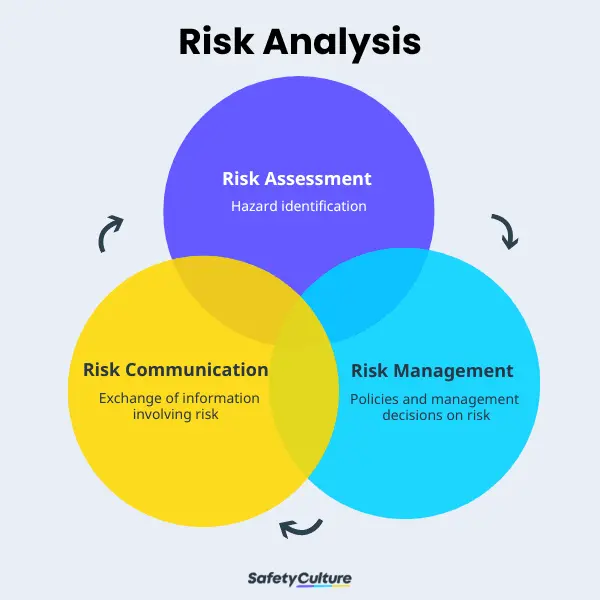The Impact of the Importance of Risk Management on Organizational Governance
The Impact of the Importance of Risk Management on Organizational Governance
Blog Article
Exploring the Importance of Risk Management for Effective Decision-Making Strategies
In the intricate globe of company, Risk Management emerges as an important aspect in the decision-making process. The ability to identify prospective threats and opportunities, and strategize appropriately, can lead to the distinction in between success and failing.
Recognizing the Principle of Risk Management
Risk Management, an important element in decision-making, is commonly misinterpreted or oversimplified. Usually, it describes the identification, assessment, and prioritization of risks to reduce, check, and control the chance or impact of unfortunate occasions. However, it's not merely about stopping unfavorable results, however also regarding acknowledging prospective chances. Risk Management involves organized and self-displined techniques, using information and informative analyses. It requires an extensive understanding of the company's context, goals, and the potential dangers that could thwart them. From economic unpredictabilities, legal responsibilities, tactical Management mistakes, to mishaps and all-natural catastrophes, it attends to different threats. Importantly, effective Risk Management is not stationary; it's a constant, forward-looking procedure that develops with transforming scenarios.
The Duty of Risk Management in Decision-Making Processes
In the world of tactical preparation and organization operations, Risk Management plays an essential duty in decision-making procedures. It aids in recognizing potential dangers and uncertainties that might affect the accomplishment of company objectives. By tracing these threats, business can formulate techniques to mitigate their impact, guaranteeing service continuity and security. Risk Management therefore becomes a vital tool in decision-making, aiding leaders to make informed selections based upon a detailed understanding of the risks entailed. It encourages an aggressive approach, enabling companies to prepare and anticipate for feasible future circumstances. This substantially reduces the chance of unfavorable consequences, advertising a lot more efficient and effective decision-making methods. Therefore, Risk Management works as an essential element in the decision-making processes of any type of company.

How Risk Management Enhances Strategic Planning
In the context of critical preparation, Risk Management plays a pivotal duty. Starting with the identification of possible dangers, it even more includes the execution of Risk mitigation measures. The duty of Risk Management is not static but dynamic, as it demands constant monitoring and adjusting of strategies.
Identifying Potential Threats

Applying Risk Reduction
Having developed the relevance of determining potential threats, the following step is to explore Risk mitigation. This process involves developing and executing methods to take care of identified risks properly. It is a critical aspect of strategic planning as it boosts decision-making by decreasing prospective unfavorable results. Risk mitigation strategies can range from Risk avoidance, Risk transfer, to risk decrease. Each approach needs our website to be customized to the specific Risk, considering its prospective impact and the organization's Risk tolerance. Effective Risk reduction needs a deep understanding of the Risk landscape and the prospective effect of each Risk. This understanding allows organizations to focus on threats and allot sources properly, guaranteeing that the most substantial risks are attended to initially.
Tracking and Readjusting Techniques
Though Risk mitigation is a critical action in critical preparation, constant tracking and adjustment of these strategies is equally essential. This recurring process enables companies to determine brand-new threats and reassess existing ones, ensuring the carried out strategies continue to be effective in the ever-changing business environment. It likewise gives a chance to examine the success of the Risk Management measures, enabling changes to be made where necessary, further enhancing critical planning. Reliable tracking and change call for making use of analytics and crucial efficiency indications (KPIs) to measure effectiveness. These tools supply beneficial data-driven insights that can inform calculated decision-making. Therefore, monitoring and changing Risk Management approaches is a vital part for boosting a company's strength and strategic planning.
Case Researches: Effective Risk Management and Decision-Making
In the globe of service and finance, effective Risk Management and decision-making typically act as the pillars of prosperous ventures. One such entity is an international oil business that alleviated monetary loss by hedging against varying oil costs. In one more instance, a technology start-up flourished by identifying and approving risky, high-reward techniques in a volatile market. A global bank, confronted with governing unpredictabilities, successfully browsed the circumstance through aggressive Risk assessment and vibrant decision-making. These instances highlight the value of astute Risk Management in decision-making procedures. It is not the absence of Risk, however the Management of it, that usually separates successful companies from not successful ones. These situations underscore the crucial duty of Risk Management in tactical decision-making. importance of risk management.
Tools and Methods for Reliable Risk Management
These tools, such as Risk registers and warmth maps, help in identifying and assessing prospective dangers. Risk action strategies, a key internet part of Risk Management, involve approving, preventing, transferring, or mitigating threats. With these methods and tools, decision-makers can browse the complex landscape of Risk Management, thus facilitating notified and effective decision-making.
Future Fads in Risk Management and Decision-Making Approaches
As we explore the huge landscape of Risk Management, it comes to be obvious that the tools and methods utilized today will proceed to develop. The idea of Risk society, where every member of an organization is mindful and entailed in Risk Management, will obtain much more importance. These fads proclaim a more positive and comprehensive approach towards Risk Management and decision-making.
Verdict

Risk Management hence ends up being an important tool in decision-making, helping leaders to make enlightened options based on an extensive understanding of the risks entailed. Risk reduction techniques can range from Risk avoidance, Risk transfer, to take the chance of reduction (importance of risk management). Effective Risk mitigation calls for a deep understanding of the Risk landscape and the potential influence of each Risk. Risk feedback approaches, a crucial component of Risk Management, entail accepting, avoiding, moving, or mitigating risks. The best site principle of Risk society, where every member of a company is conscious and entailed in Risk Management, will gain much more prestige
Report this page